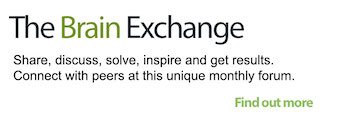How to be an engaging conversationalist

How many times have you had a conversation with someone whose opinion about you really matters and walked away feeling dissatisfied about how it went? Sometimes we fail to present ourselves positively or forget to mention a really important point. Other times we might feel we lost the opportunity to build a rapport with the person. Were you aiming to build a better working relationship with them? If so, how likely are they to want to talk to you again?
There are many work situations where the pressure is on to make a positive impression during a short conversation – these include interviews, networking events and meeting a new boss. I’m interested in the conversations where the objective is to build a rapport and develop a positive working relationship. You might want to get to know an influential, senior person in your organisation. Or perhaps you are working on a project with a client and want to extend your networks to the key decision makers within the company. Let’s say you’ve arranged a meeting with that all important influential person. Great! That’s the first step. Now, how can you make the most of this opportunity to impress?
First be clear about the objective of the conversation and prepare for it. Anticipate their questions and have some answers ready, or rehearse the way you will present your ideas. If there is no particular agenda then treat this as an opportunity to do some fact-finding. This is a great way to demonstrate interest in the person, their role and their objectives. It involves a lot of listening and the use of intelligent questions. Here’s a useful crib sheet for this type of conversation. I have used this on many occasions to help high-flying Executives who find themselves lost for words when it comes to small talk! It’s very simple and surprisingly effective.
1. Open with a brief introduction and explanation for the discussion. “I’m interested in getting some feedback on X” or “I’d appreciate some advice on X” or even “I’m on a fact-finding mission..”
2. Use open questions. (Who? What? Why? How? When?) “Why do you think that’s happening?” or “Who would be a good person to speak to about that?” or “What do you think would improve that situation?”
3. Use affirmative statements. “I see” or “that’s interesting”
4. Check your body language. Smile, nod or show concern as appropriate. Keep an open posture (arms uncrossed, lean forward), maintain some eye contact and don’t fidget!
5. Explore the relevant issues further. Direct the conversation by picking up on points that are useful to you. “Can you expand on that?”
6. Clarify and check understanding. “So, if I have understood this correctly…” or “so I think you’re saying that….” Or “so just to be clear…”
7. Summarise and suggest next steps. “So, can I just recap – (points a, b, and c)” or “I’d like to come back to you by (date)…with some options…”
8. Thank them! “I really appreciate you taking the time to see me. It’s been very useful.”
Every situation is different and you’ll need to use some judgement about what is appropriate or effective in each case. The point is, be prepared to listen and fully attend to the other person – sounds easy but very few people can do this well.
For more listening tips see JPA’s Top Ten Tips for Effective Listening.
Top Ten Tips for Effective Listening
Both comments and pings are currently closed.

















